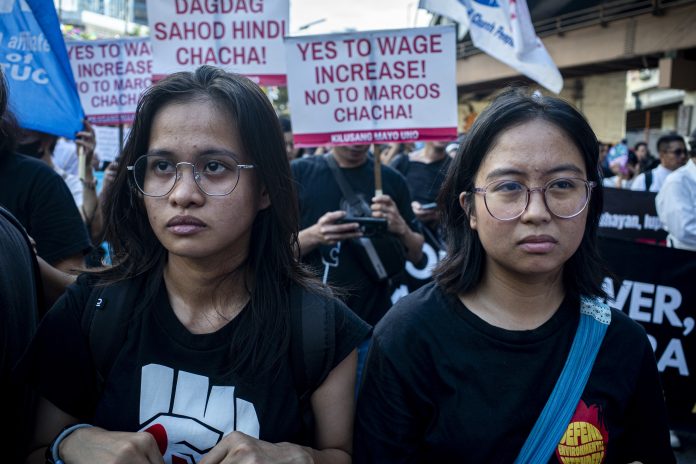“When our wounds cease to be a source of shame and become a source of healing, we have become wounded healers” – Henri Nouwen, Dutch priest and a writer.
Recently, I was able to read the testimonial shared by Jhed Tamano and Jonila Castro – two youth advocates defending Manila Bay and the residents near its shores against reclamation and development projects – during a celebration of the Holy Mass at Baclaran Church.
They recounted the horrific acts of abduction and “surrendering” that were forced on them by men in uniform. But in spite of those attempts at “scaring” their very lives and resolve for their advocacies, they dared to courageously speak the truth that they are not terrorists and that what they fight for is justified.
And now, their very experience and firmness, which they shared with the public in a controversial press conference and eventually with the multitudes of devotees in Baclaran became their resurrection stories – that the woundedness and passion they experienced because of their commitment to justice and truth further strengthened the fire of hope and perseverance to keep on fighting for creation and with the people!
It is this same story of journeying from woundedness to liberative healing, from death to new life, from despair to defiant hope, which greatly characterizes the resurrection of Jesus and the eventual birth of the first Christian community.
The beginning of this Sunday’s Gospel saw the disciples behind locked doors because of extreme fear that they might suffer the same fate as their Teacher and Lord – an accused, wounded rebel shamefully hanged on a cross.
But upon encountering the Risen Christ who appeared to them still bearing the wounds of his passion and death, they were never the same.
From being a bunch of seeming cowards behind doors, they eventually went out to the streets and dared to live lives akin to Jesus himself: preaching the Good News of love and liberation to the poor, healing the sick, reconciling with sinners, and expanding a koinonia (community) “of one heart and mind,” wherein “there was no needy person among them.”
The resurrection story being very much alive and concrete from the pages of the New Testament, to the “good news” of my life and of the lives of countless others who are witnessing to give and acquire hope despite internal contradictions and societal oppressions they’ve endured, made me exclaim like Thomas: My Lord and my God!
I cannot help but remember and be moved by the memory of Lumad bakwit students whom we journeyed with during my first year as a seminarian. Despite the closure of their schools, the constant threats and attacks they faced, and the death of one of their most staunch leaders – Bai Bibyaon Bigkay – they dared to continue the struggle for their land and their people.
I, too, cannot help but reminisce in my reflection, the narratives of urban poor communities such as those in Sitio San Roque (Quezon City), Maisan (Sampaloc), and many more whose sense of solidarity continue to make them firm in the fight for their place and dignity in the cities.
And also, despite the nearing deadline, once again, of the consolidation of jeepneys this April 30 to pave the way for the anti-masa “PUV Modernization Program,” groups like PISTON, Manibela, and a wide number of tsupers alongside other sectors of society do not lose hope and unite in the struggle against such problematic policy and program by the current government.
These are only some of the many, often unheard or overlooked resurrection stories of our time and society.
Especially in this age wherein the threats of continuous attacks and abuses by those in power worsen, the possibilities of re-entry of imperialist forces, and the poor socio-economic conditions of ordinary Filipinos continue to deteriorate – wounds become more prevalent.
And yet, such wounds cry all the more for healing and redemption. Such moments of passion and death for our people challenge us all to rise up and continue the prayer and struggle for our resurrection.
As Easter people, this is our hope. So may it be. Amen, Alleluia!
Gospel reflection of Luke Gealogo, Redemptorist Seminarian for the Second Sunday of Easter
Acts 4:32-35 Ps 118:2-4, 13-15, 22-24 1 Jn 5:1-6 Jn 20:19-31
Balik-Tanaw is a group blog of the Promotion of Church People’s Response (PCPR). The Lectionary Gospel reflection is an invitation for meditation, contemplation, and action.









